The art of drawing with charcoal offers a unique avenue for artists to explore and express their creativity, especially when it comes to the delicate subject of flowers. Charcoal, known for its rich blacks and a wide range of tones, can bring an organic and dynamic quality to floral artwork. Beginners may find the medium challenging, but with practice and the following tips, they can master the art of charcoal flower drawing and create stunning, evocative pieces.
Establishing a Foundation with Sketching Basics
Understanding Charcoal Tools
Before diving into drawing, familiarize yourself with the different types of charcoal. The primary forms include vine charcoal for soft, light marks; compressed charcoal for darker, more defined lines; and charcoal pencils for detailed work. Experiment with each type on various grades of paper to get a feel for their capabilities. This understanding will help you leverage their specific characteristics when composing your flower drawings.
Creating Your Initial Sketch
Start your flower drawing with a light, gentle sketch using vine charcoal or a charcoal pencil. Begin by capturing the basic shapes and forms of the flower, focusing on the overall structure and proportion. Avoid heavy-handed marks at this stage; you’re setting the stage for later refinement. Use faint lines to outline petals, stems, and leaves, keeping in mind that these initial guides will be gradually developed or erased as your drawing progresses.
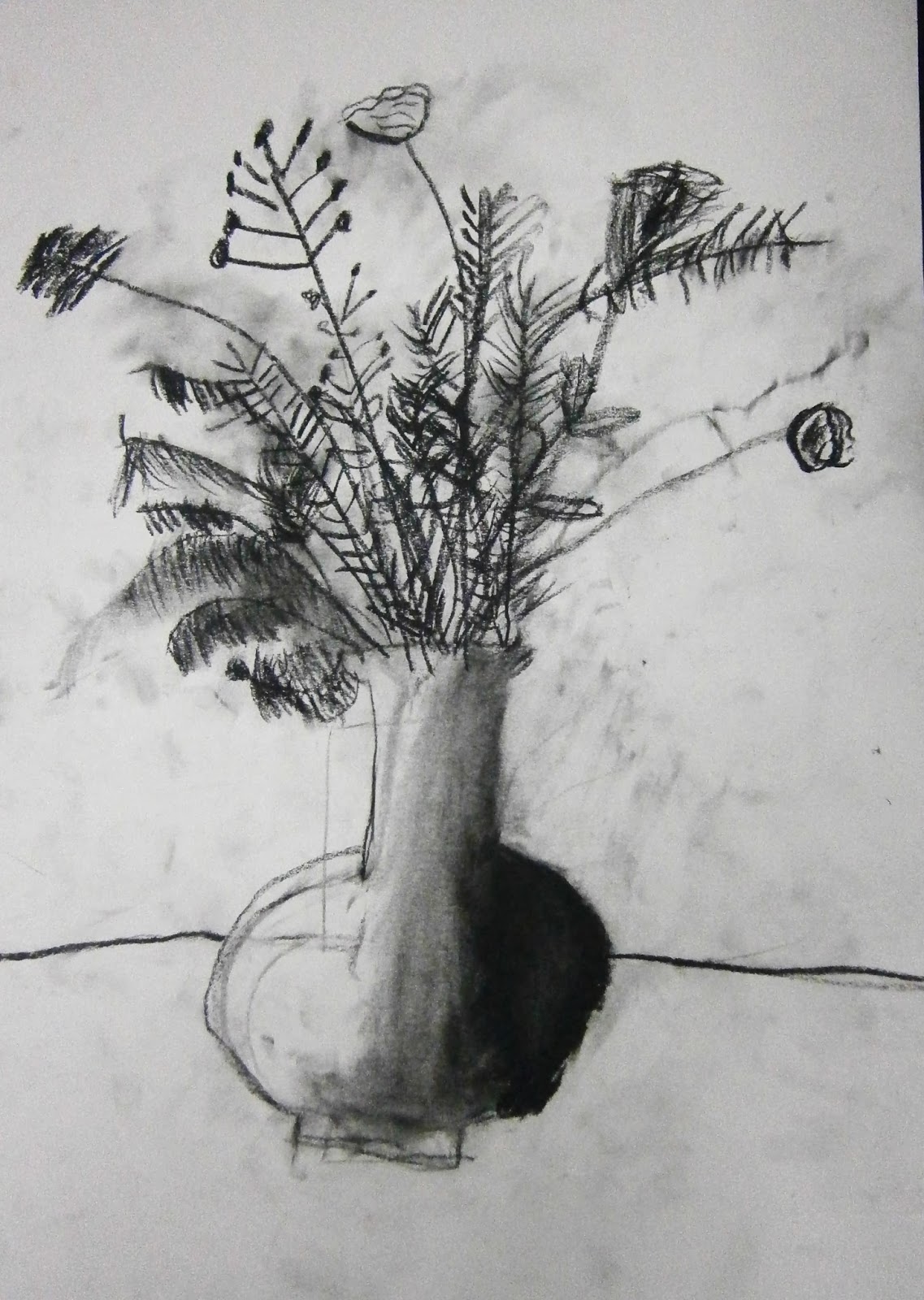
Shading Techniques for Depth and Realism
Layering Tones for Volume
Charcoal allows for rich layering, which can translate the three-dimensional form of flowers onto a flat surface. Start with lighter values, gradually building up to the darker tones. Employ the side of your charcoal stick to cover broader areas with a soft shade, establishing a base for the flower. This approach helps create volume and dimension, making your flower appear more lifelike.
Enhancing Contrast with Highlights and Shadows
Flowers have intricate patterns of light and shadow, which charcoal captures beautifully. Identify the areas where light naturally hits the flower and use kneaded or rubber erasers to lift charcoal off these spots, creating highlights. Conversely, use compressed charcoal to deepen the shadows within the flower’s crevices and where petals overlap. The contrast between these lights and darks will give your flower drawing a dramatic and realistic appearance.
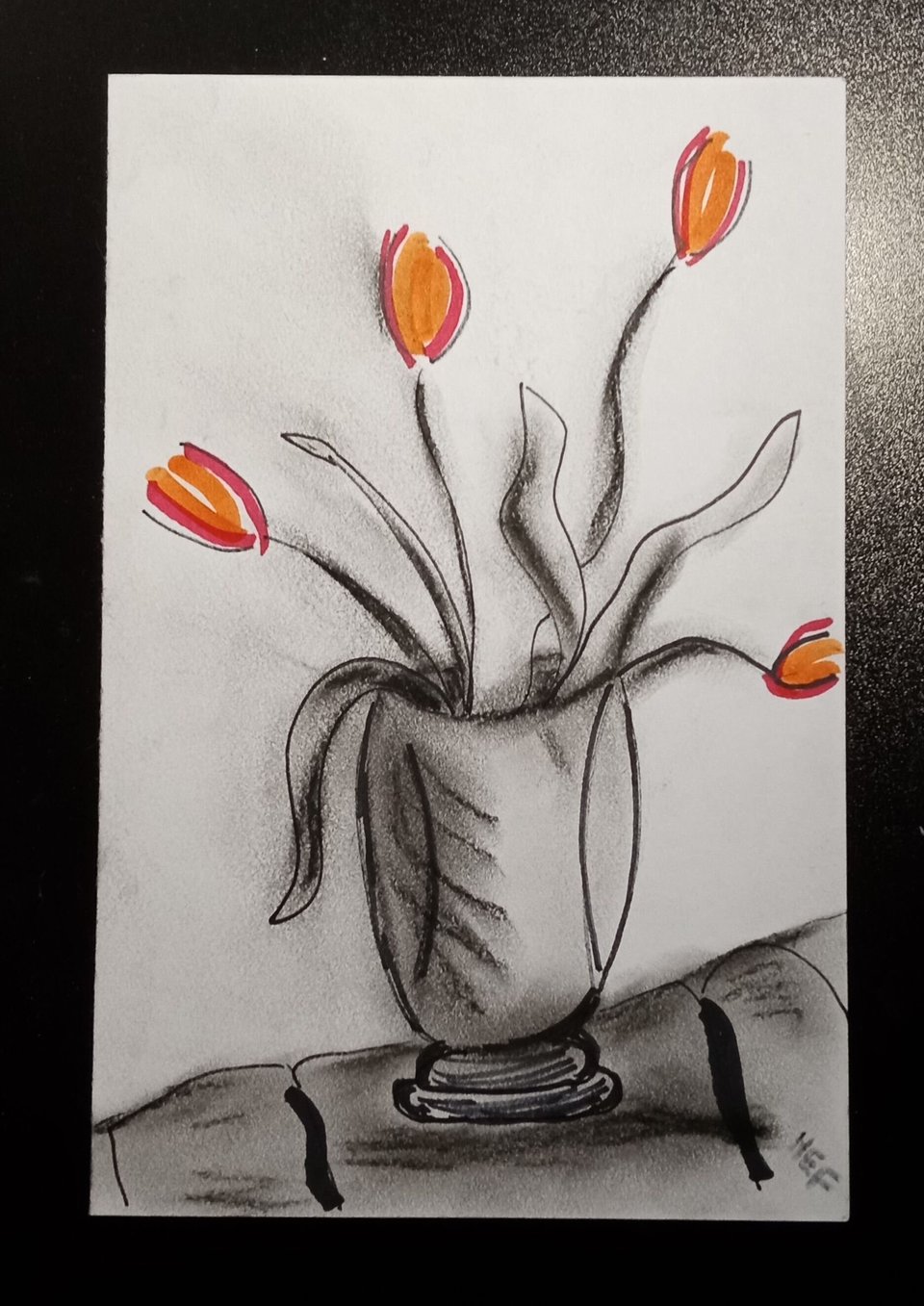
Refining Details to Capture the Essence of the Flower
Attending to Petal Texture
Every flower has unique textures that can be accentuated with charcoal. For example, the delicate veins of a petal can be subtly suggested with fine lines made with a charcoal pencil. Observe the direction and quality of these lines on an actual flower to replicate them more accurately. Softly smudging the edges of these lines can integrate them into the petal, giving a more natural look.
Bringing the Flower to Life with Finishing Touches
Attention to detail can transform a good drawing into a great one. Take the time to refine the stamen and pistil, adding dots, dashes, and delicate lines to suggest pollen and texture. Consider the space around the flower, adding hints of leaves or stems, ensuring they complement the focal point rather than compete for attention. Use a fixative spray to set your charcoal drawing and prevent smudging once you’re satisfied with the final result.
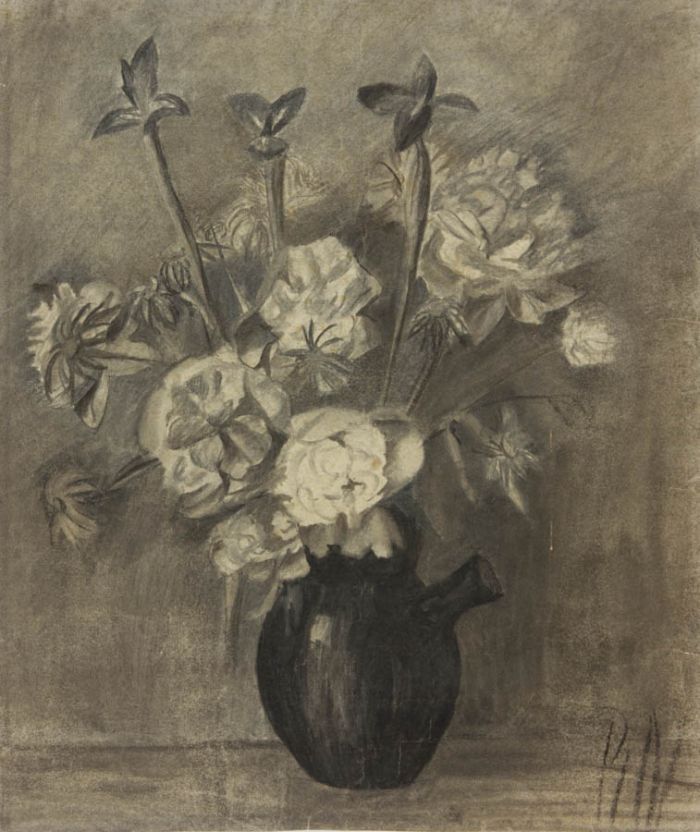
Overcoming Challenges and Practicing Patience
Managing Smudging and Dust
Charcoal is a forgiving medium, but it’s also prone to smudging. Embrace this aspect, using your finger or a blending tool to soften edges and blend tones where needed. Keep a clean sheet of paper under your working hand to minimize unintentional smudges. Sharp, unexpected sneezes or gusts of wind can be detrimental, so work in a calm environment, and be mindful of your drawing’s exposure.
Embracing the Learning Curve
Patience is key when working with charcoal, especially for beginners. Expect that your first attempts may not meet your expectations, and that’s perfectly okay. Each drawing is a learning experience, and over time, your control of the medium and your ability to translate the beauty of flowers to paper will improve significantly. Practice regularly, experiment with different techniques, and don’t be afraid to make mistakes—they’re often the best teachers.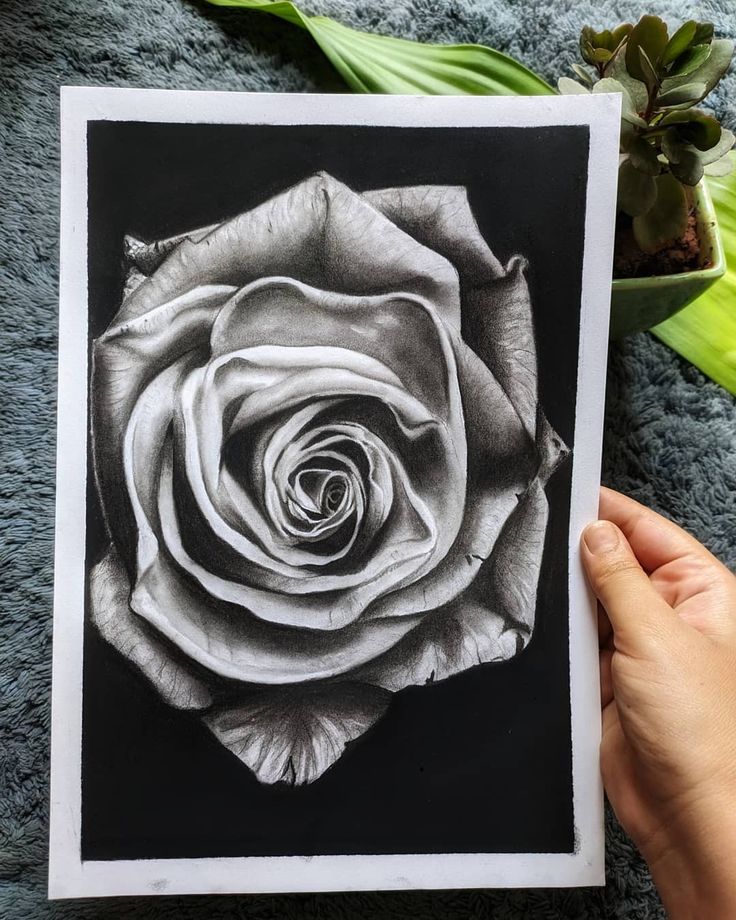
Honing Precision with Tools and Techniques
Utilizing Tools for Delicate Control
Charcoal can be unpredictable, but with the right tools, you can gain precision over your drawings. Stumps and tortillons are perfect for smudging smaller areas, creating soft gradients and controlling the subtleties of shadows within the petals. Use sharpened charcoal pencils for fine lines and details, and don’t undervalue the power of a good eraser. A kneaded eraser, in particular, is moldable and can be used to create detailed highlights or clean up any excess charcoal dust around the flower.
Mastering Stroke Variations
Experimenting with different stroke techniques can greatly enhance the texture and realism of your flower drawings. Use a variety of marks—such as hatching, cross-hatching, stippling, and back-and-forth strokes—to represent the diverse textures you observe in your floral subject. Remember to vary the pressure on your charcoal tool to adjust the darkness of the lines, creating a more dynamic and convincing rendition of the flower.
The Role of Observation in Charcoal Drawing
Studying Flowers Closely
A significant aspect of mastering flower drawing is the power of observation. Spend time really looking at flowers, noting how petals curve and fold, how the light plays across the surfaces, and where the deepest shadows lie. Sketching from real flowers or detailed photographs can give you a clearer understanding of their form and detail. Keep practicing these observations, and your ability to capture the essence of the flower will grow stronger with each drawing.
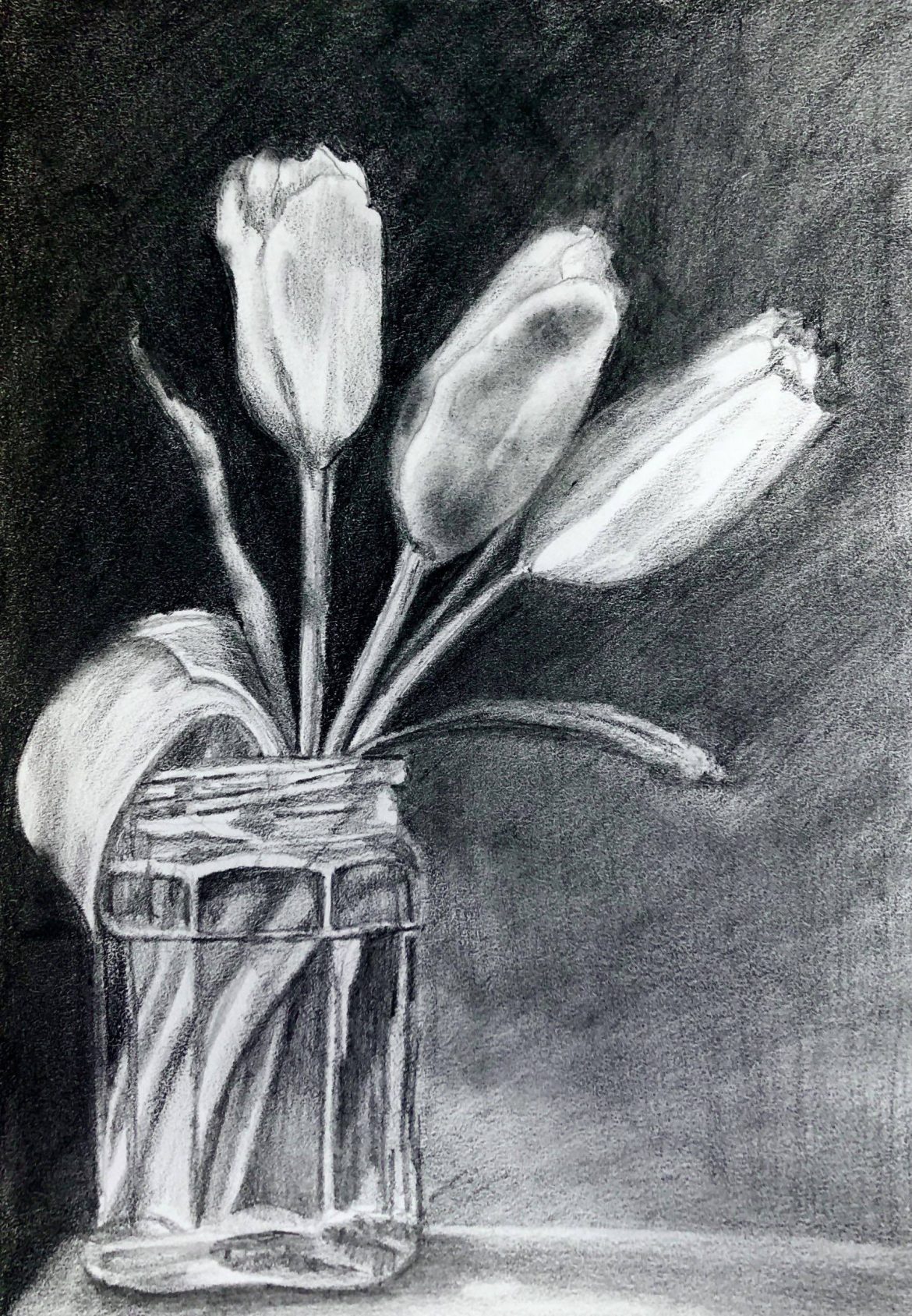
Mastering charcoal flower drawing is an enriching pursuit that combines the organic expressiveness of charcoal with the innate beauty of flowers. It requires an understanding of the medium, attention to detail, and a patient approach. By starting with a strong foundation, focusing on shading and contrast, refining textures and details, and learning to manage the medium’s challenges, beginners can develop the skills to create captivating charcoal flower drawings. Remember, the journey is as rewarding as the artwork itself, so take pleasure in each stroke and blossom in your artistic growth.